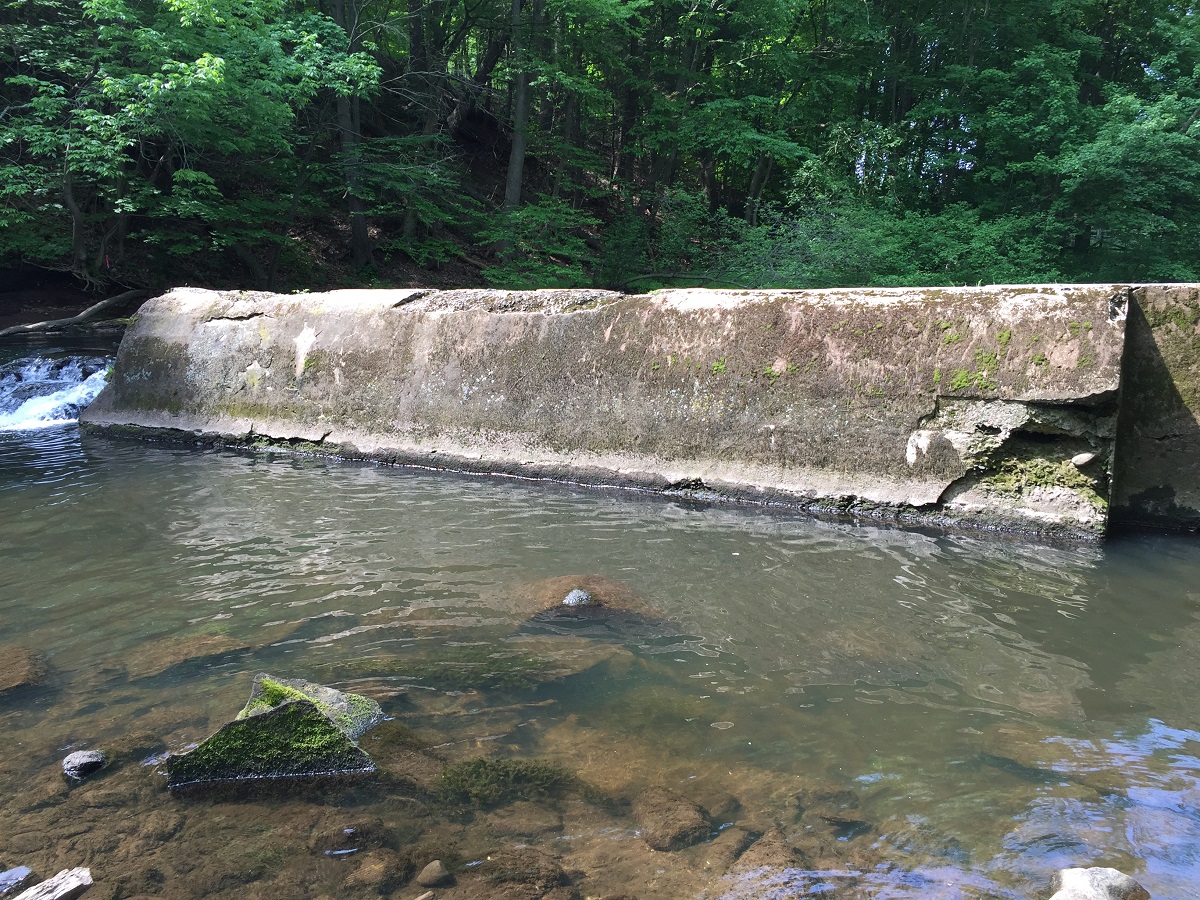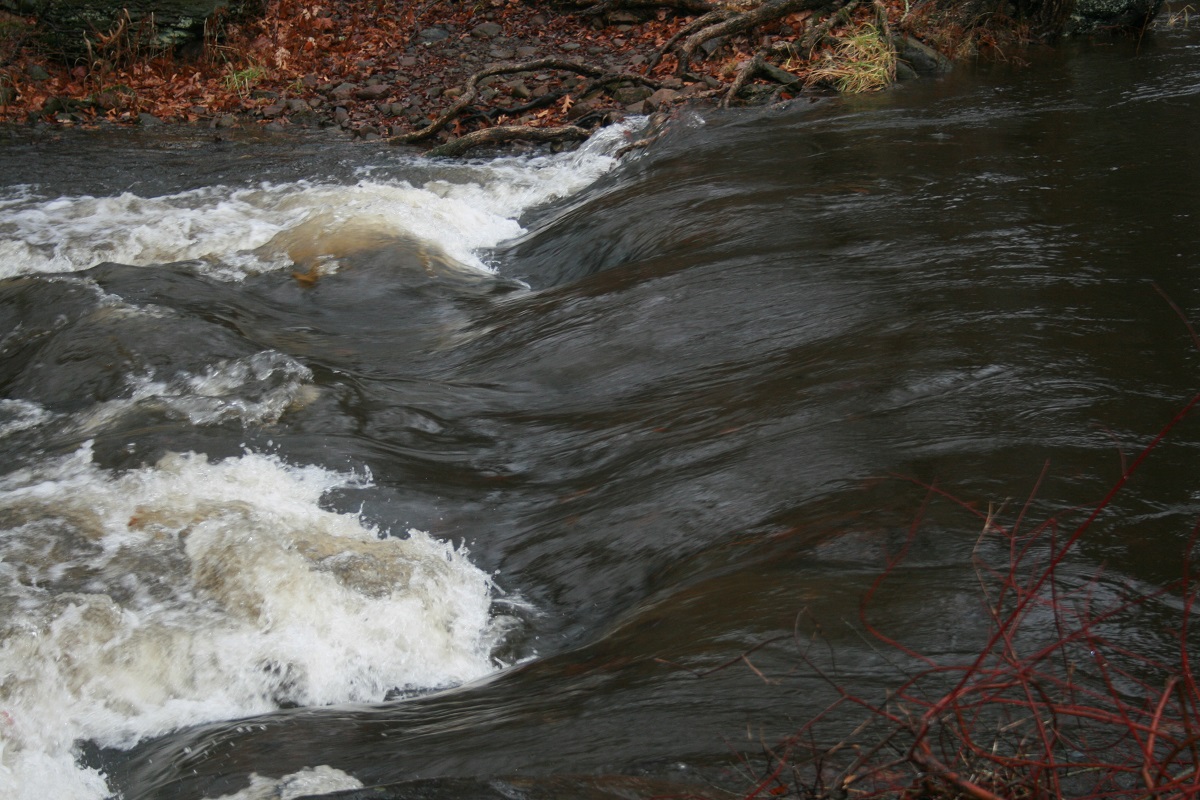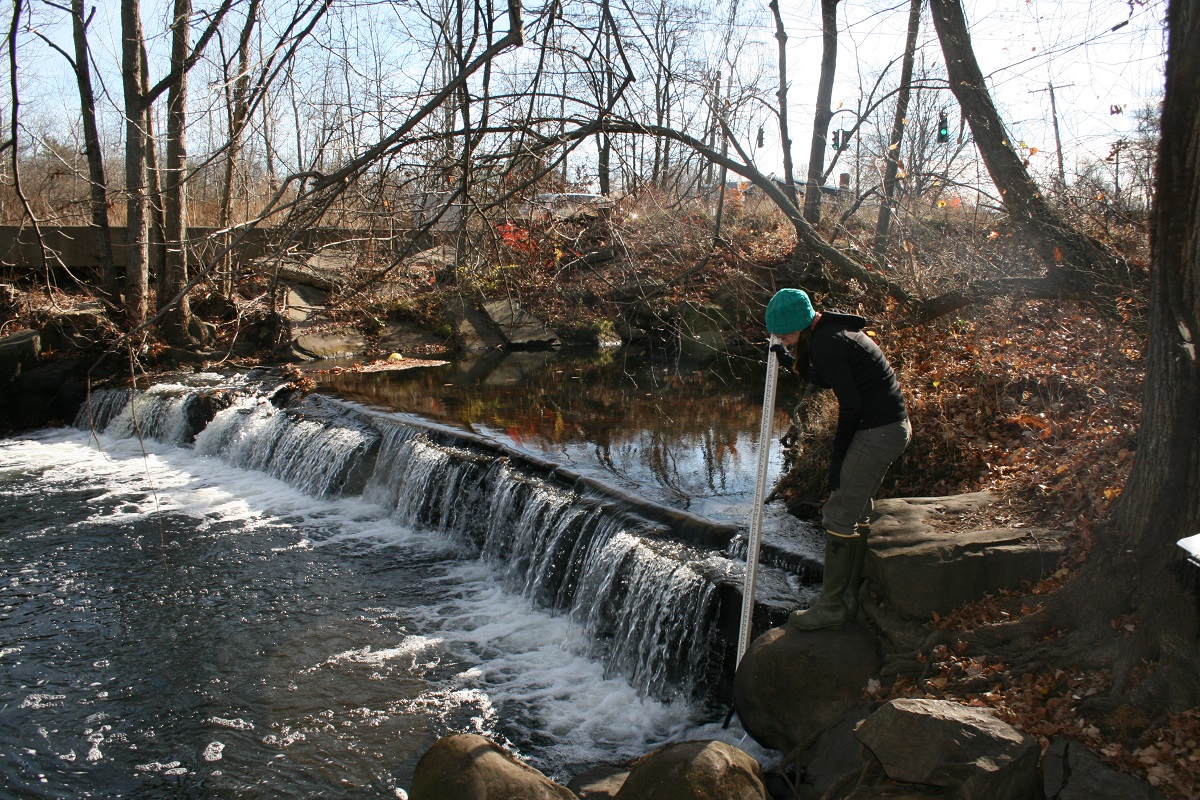It’s the Last Dam Summer for Southington, Meriden on the Upper Quinnipiac River
Join July 28 Open House at Southington Municipal Center to learn about removal of Clark Brothers, Carpenters dams

New Haven, Conn. – For the first time in 150 years, migratory fish such as American shad and river herring will swim into the upper reaches of the Quinnipiac River.
Connecticut Fund for the Environment and its bi-state program Save the Sound (CFE/Save the Sound), the U.S. Fish and Wildlife Service (Service) and the Connecticut Department of Energy and Environmental Protection (DEEP) are partnering with the Town of Southington, Apple Valley Bowl and the City of Meriden to remove two dams this summer on the Upper Quinnipiac River in August: Clark Brothers Dam, adjacent to Apple Valley Bowl off of Route 10 in Southington, and Carpenters Dam, located off of Sindall Road in Meriden near the start of the City’s Linear Trail.
CFE/Save the Sound, DEEP and the Service also plan to remove an inactive, exposed water line that crosses the river in Cheshire in the next six to twelve months. Two dams downstream have fishways that allow fish such as American shad and river herring to migrate from Long Island Sound into the Quinnipiac River. Carpenters and Clark Brothers dams block these fish from going farther upstream. With the dams gone, the fish can access more spawning habitat and then produce more young fish.

The Service and CFE/Save the Sound welcome area residents to an open house on Thursday, July 28, 2016, from 7 – 8:30 pm in the multi-media room at the Southington Municipal Center, 196 North Main St., Southington, CT to discuss the dam removal projects and answer questions.
The Service has also released a Supplemental Environmental Assessment discussing the potential effects of the projects on ecological, historical, cultural and socioeconomic resources. The Service is accepting written comments on the assessment, which can be found at http://www.fws.gov/newengland, until August 1, 2016. Comments can be sent to US Fish & Wildlife Service, 70 Commercial Street, Suite 300, Concord, NH 03301 Attn: Lauren Bennett; or lauren_bennett@fws.gov.
Over the last year, the Service and CFE/Save the Sound have partnered to remove two other dams, in New Haven and Mystic. About 127 dams have been removed in New England in recent years. According to a recent region-wide assessment of dams, New England has one of the highest concentrations of dams in the country: an estimated 14,000 dams; Connecticut alone is estimated to have over 4,000 dams. Many of these dams no longer provide any economic benefit while requiring costly maintenance. Not only do dams prevent fish and other aquatic organisms from moving upstream, dams can also prevent sediment from moving downstream to replenish estuaries and beaches. Additionally, aging dams can pose flooding risks to local communities during big storms. Removing dams can both restore natural resources and help communities.

Funds for the removal of Clark Brothers and Carpenters dams come from natural resource damage settlements associated with the Solvents Recovery Service and Old Southington Landfill Superfund sites, both located in Southington, CT. Hazardous waste disposed at the sites, including volatile organic compounds (VOCs), polychlorinated biphenyls (PCBs), and metals, as well as remedial activities required to clean up the sites, resulted in the degradation, and in some places destruction, of wetlands as well as injuries to the Quinnipiac River.
As a result, the quality and availability of foraging habitat for birds, fish and other wetland-dependent species was reduced. CFE/Save the Sound joined the EPA in legal action against the polluters. In settlements with the responsible parties, the Service received approximately $800,000 to restore impacted natural resources. Removal of Clark Brothers and Carpenters Dams was chosen as a top priority project in a 2013 restoration plan that the Service developed with local communities in the Quinnipiac River watershed.
###
For further information, contact:
Lauren Bennett, USFWS, (603) 227-6426
Laura McMillan, CFE/Save the Sound, (540) 292-8429

The work Save the Sound is doing is amazing! This dam removal project is telling such a story and making me wonder about this country’s historical use of water resources. A dam seems so harmless. What settler wouldn’t want plentiful water for animals and crops? But here we are now, farmers are gone, and there is urgency to bring back the life and habitat of those brooks and streams all over Ct. I never knew there were so many dams! The photos for each of these successes are totally inspiring.